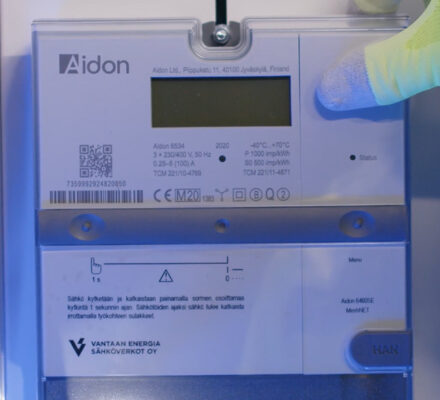
Streetlights are a proven way to reduce crime and accidents, but those benefits come at a steep price. According to the World Bank, in some cities, streetlights use so much electricity they consume up to 20% of municipal budgets.
Many cities have replaced their metal halide and high-pressure sodium streetlights with LEDs, which are 40% to 60% more energy-efficient, to save money. Higher efficiency also helps cities meet green goals like reduced CO2 emissions.
Now cities are turning to Internet of Things (IoT) technology to take those benefits to the next level. IoT enables “smart streetlights” that use sensors to increase their brightness automatically when vehicles and pedestrians are nearby. For example, smart streetlights can use IoT to connect to a city’s existing video surveillance cameras to detect pedestrians. IoT also enables centralized management, such as turning up the brightness for all streetlights on the blocks surrounding an arena as a game ends.
These kinds of IoT-powered capabilities save far more electricity than traditional methods such as timers — or leaving streetlights at the same brightness all the time. They also reduce light pollution, which disrupts the circadian rhythms of people living in cities and suburbs. No wonder that the global installed base of smart streetlights has a compound annual growth rate (CAGR) of 24.5%, according to Berg Insight.
CDMA450 Reduces the Infrastructure Costs of Smart Streetlight Deployments
European cities lead the world in smart streetlight deployments, with nearly 40% of the global installed base, Berg Insights says. Europe is also home to many of the world’s 450 MHz cellular networks, used for applications such as smart utility metering.
“In many countries across Europe, the 450 MHz frequency band is fully operational,” says Mr. Gabor Monok, CTO of WM Systems, a Hungary-based IoT developer. “Norway, Denmark, Sweden, Finland, Germany and the Netherlands are examples in the western part of Europe. Latvia, Poland, Czech Republic, Romania, Russia and Ukraine are examples in central and eastern parts of Europe.”
Many European utilities and other businesses are using CMDA in the 450 MHz band. Like GSM/GPRS, CDMA is a mature technology, offering low module costs and extensive coverage, particularly in Eastern Europe.

Another key advantage is the low spectrum, which enables CDMA450 signals to travel farther. As a result, to cover all the streetlights in a city, CDMA450 requires far fewer base stations than cellular technologies that use higher frequencies like 1800 MHz.
CDMA450’s low spectrum also does a better job at penetrating physical obstructions, ensuring a reliable connection to streetlights even when they’re deep inside a city’s concrete canyons.
The 450 MHz frequency band was introduced in Europe because of its ‘perfect’ propagation characteristics.
Gabor Monok, CTO of WM Systems
Custom Industrial IoT Solutions to Meet Unique Requirements
One CDMA450 user is a major European regional grid operator, with over 3 million electricity connections. The company issued a tender for switch boxes and routers to launch a smart streetlight solution. The devices would be collocated in the lighting cabinets that connect groups of streetlights to enable remote control and automation.
Working with Honeywell’s Elster division, WM Systems custom-designed an industrial-grade CDMA450 router, along with software, to meet the grid operator’s requirements for manageability, security, high reliability and minimal network pollution.

A complete solution to manage and monitor all grid communications was also an important requirement, to allow smooth automated data collection and analysis, managed software updates/configuration and in general complete device management. One of the peculiarities of the project was that SIM cards are not used in this network, so our devices had to work without them.
Gabor Monok, CTO of WM Systems
WM Systems also provided a CDMA450 switch box to support streetlight control. The switch box and router were combined into a single case.
“Our LCB760 Switch Box features four bi-stable relays and special integrated software to enable switching in a customized, secure and reliable way,” says Monok.
WM Systems also guarantees firmware updates for 16 years, which is crucial because utilities, municipalities and other streetlight operators want their IoT infrastructure to remain in service for as long as possible. For example, replacing hundreds or thousands of switch boxes and routers every five or even 10 years would undermine the savings that smart streetlights enable.

The Telit Advantage
WM Systems’ solutions for smart streetlights, smart grids and other applications feature Telit modules, including the CE910-SL. Launched in 2015, the CE910-SL quickly became the centerpiece of a US$30 million smart meter vendor project in the Netherlands. Telit designed the CE910-SL specifically for CDMA450 applications that use either public or private networks, including utilities, banks, security firms and public safety organizations.
The CE910-SL’s compact LGA form factor is pin-to-pin compatible with the xE910 family, making it easy for IoT solution providers to leverage the same design for various 2G and 3G products. With support for speeds of up to 153.6 kbps in full-duplex mode, the CE910-SL also includes UART/USB interfaces and integrated TCP/IP and UDP/IP stacks for extended functionality, adding value, not cost, to the customer application.
The Telit CE910-SL played a critical role in helping WM Systems and Elster win the project.
“Honeywell supplied the head-end system, and WM Systems has shipped over 20,000 communication devices to the client,” Monok says.

We are long-time partners of Telit and currently use Telit modules in almost all our products. We sell our products globally. We have sold to most countries in Europe, Middle East and South America. We’re actively looking for market entry opportunities in countries such as Malaysia, Vietnam, Nigeria, Thailand, Taiwan, Colombia, Mexico and Brazil.
Gabor Monok, CTO of WM Systems


